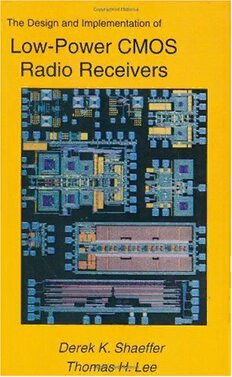
The Design and Implementation of Low-Power CMOS Radio Receivers PDF
221 Pages·1999·7.262 MB·English
Most books are stored in the elastic cloud where traffic is expensive. For this reason, we have a limit on daily download.
Preview The Design and Implementation of Low-Power CMOS Radio Receivers
Description:
The primary goal of The Design and Implementation of Low-Power CMOS Radio Receivers is to explore techniques for implementing wireless receivers in an inexpensive complementary metal-oxide-semiconductor (CMOS) technology. Although the techniques developed apply somewhat generally across many classes of receivers, the specific focus of this work is on the Global Positioning System (GPS). Because GPS provides a convenient vehicle for examining CMOS receivers, a brief overview of the GPS system and its implications for consumer electronics is presented. The GPS system comprises 24 satellites in low earth orbit that continuously broadcast their position and local time. Through satellite range measurements, a receiver can determine its absolute position and time to within about 100m anywhere on Earth, as long as four satellites are within view. The deployment of this satellite network was completed in 1994 and, as a result, consumer markets for GPS navigation capabilities are beginning to blossom. Examples include automotive or maritime navigation, intelligent hand-off algorithms in cellular telephony, and cellular emergency services, to name a few. Of particular interest in the context of this book are embedded GPS applications where a GPS receiver is just one component of a larger system. Widespread proliferation of embedded GPS capability will require receivers that are compact, cheap and low-power. The Design and Implementation of Low-Power CMOS Radio Receivers will be of interest to professional radio engineers, circuit designers, professors and students engaged in integrated radio research and other researchers who work in the radio field.
See more
The list of books you might like
Most books are stored in the elastic cloud where traffic is expensive. For this reason, we have a limit on daily download.
